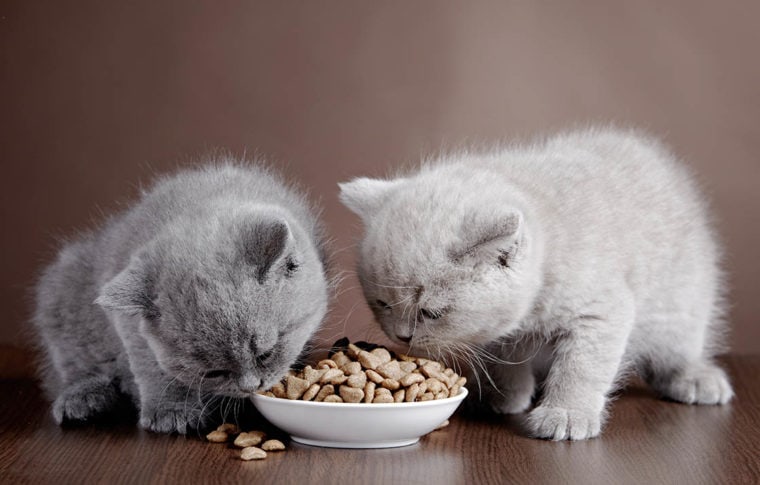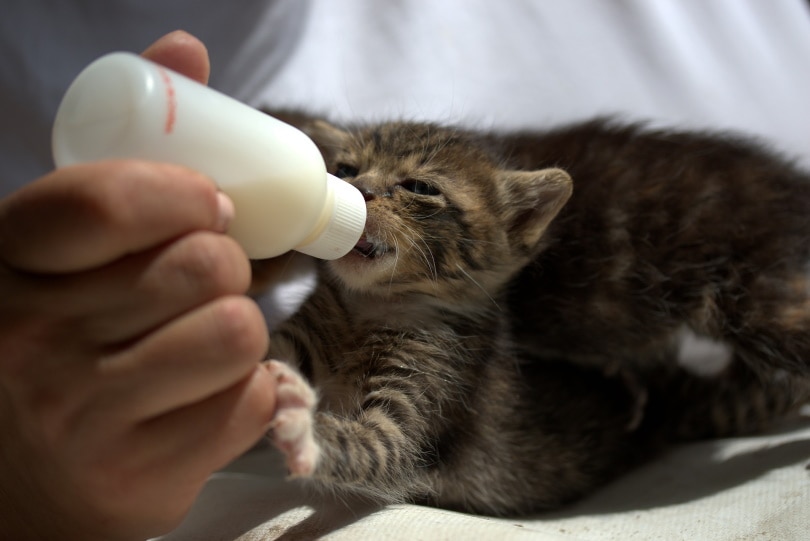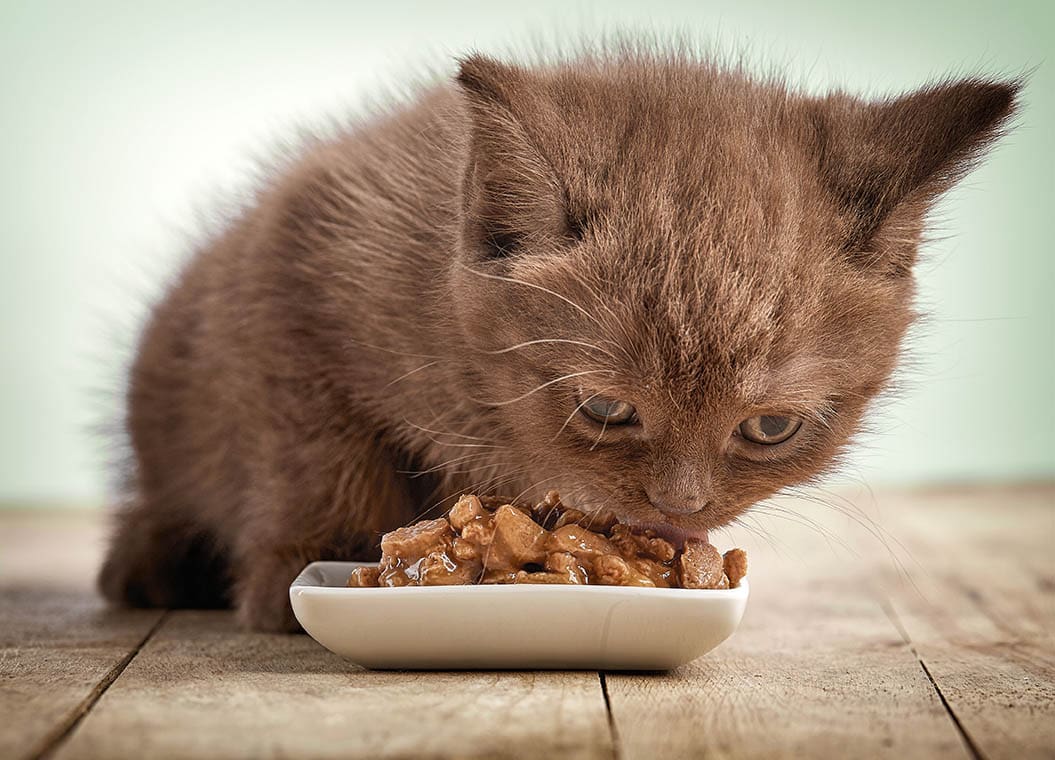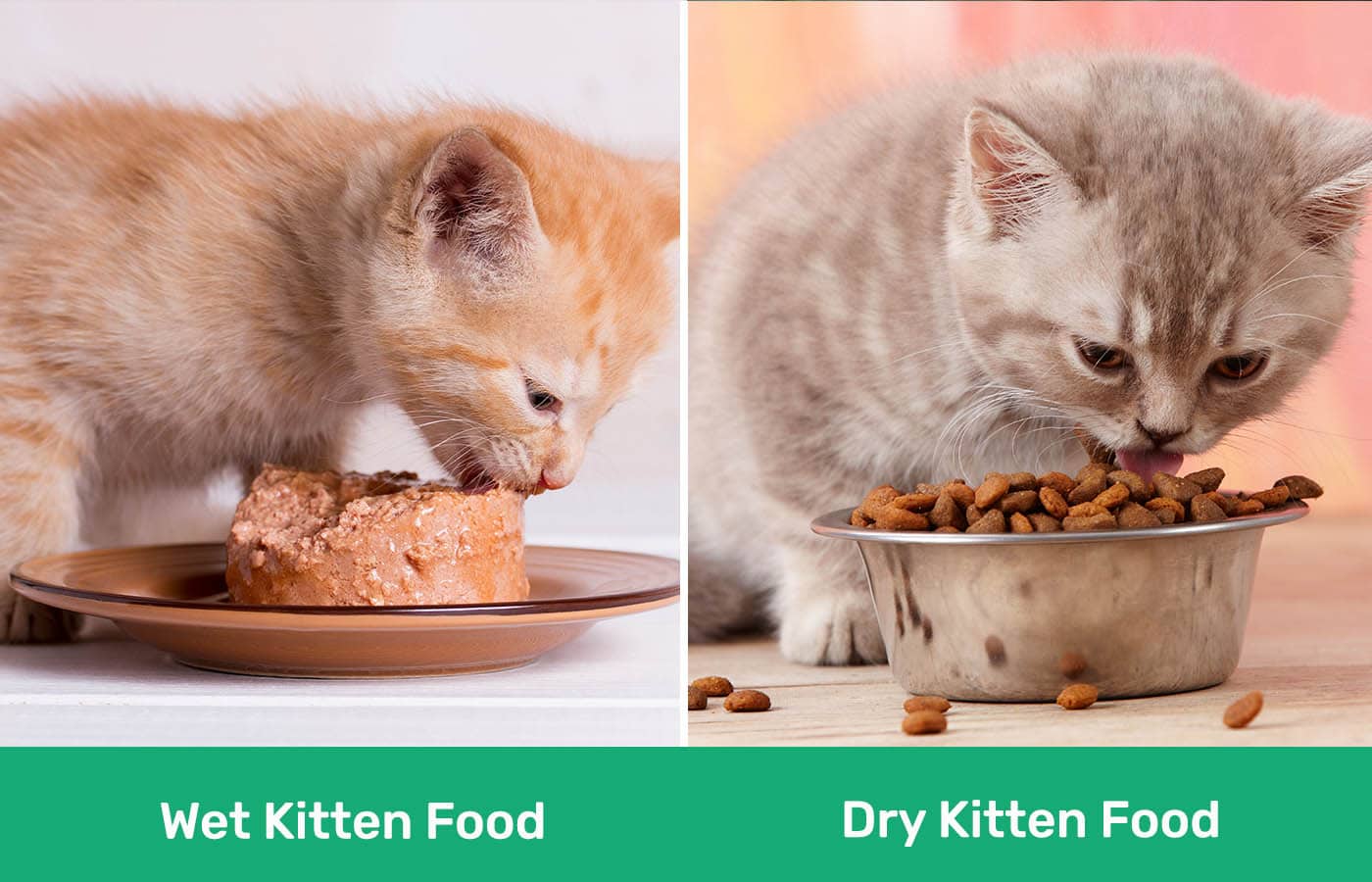How Much to Feed 15 Week Old Kitten

Adopting a kitten into your home can be both an exciting and nerve-wracking experience because there is so much to learn. Potty training, socializing, and feeding are just a few of the tasks that you'll need to face with your new fur baby. However, the joy, love, play, and comfort that your kitten will bring into your home always outweighs the nerves, and you'll become a confident cat parent in no time with some research and experience.
Most kittens are ready to leave their parents between 6 to 8 weeks old, so you won't have to worry about bottle-feeding but finding the right kitten food, knowing how much to feed them, and when to change their food can be overwhelming for a new cat parent. Thankfully, we've had a lot of experience, and we're here to help you through the process.

The Importance of a Kitten's Diet
Kittens start out in life as vulnerable little animals that need the right food and nutrition to develop and grow into strong, healthy cats. Because their bodies are more sensitive and require different things than adult cats, they need food that has been designed for kittens and contains everything they need to grow.
Kitten food usually contains higher levels of animal-based protein, calories, and nutrients than adult food because their bodies need a lot more energy to grow. They're also wildly playful during kittenhood—which also requires a high number of calories to provide them with the energy they need.
Feeding Requirements Per Age
We've included a feeding guideline on what kittens need during their different life stages, but kittens differ slightly depending on the breed and health and may require a little more or less than what the average kitten needs. You'll receive the most accurate feeding plan for your kitten from your vet, so chat with them if you have any concerns.

0–8 Weeks Old
Most kittens are ready for adoption once they've been weaned off their mother's milk. The milk is packed with everything the kittens need to grow, and the mothers will feed them around every 2 hours for the first 2 weeks and then every 3–4 hours until they're 4 weeks of age, resulting in a weight gain of about 4 ounces per week.
If you've adopted an orphan kitten, you'll need to bottle feed them. PetAg Complete Nursing Kit + KMR Kitten Milk Replacer Powder is a great starter kit as it provides you with the feeding equipment you'll need, along with the formula that contains similar nutrients to a kitten's mother's milk. Your kitten will receive protein, taurine, vitamins, minerals, and amino acids from this formula that aid in their growth.
From 5 weeks, kittens can be introduced to a little bit of solid food but make sure it's soft and warm. They'll still require their mother's milk until they've been completely weaned off it and onto solid food. The weaning process can start with the kitten licking wet kitten food mixed with warm water from your finger and then from a flat dish. This can be repeated three to four times throughout the day.
Regardless of whether you feed your cat dry or wet food, you need a bowl that is sure to keep the mess contained—you can do just that with the Hepper Nom Nom Bowl.
This product is designed with your cat's comfort in mind. The whisker-friendly bowls are low and wide to prevent whisker fatigue, and the wide catch tray ensures that all food stays exactly where it should—inside the bowl.
At Pet Keen, we've admired Hepper for many years and decided to take a controlling ownership interest so that we could benefit from the outstanding designs of this cool cat company!
2–6 Months Old
From 8 weeks, your kitten will have developed little teeth, be able to chew, be completely weaned off their mother's milk, and be able to eat solid food. Wet canned kitten food can be served to your kitty as is, but dry kitten food should still be mixed with warm water, making it soft enough for your kitten to munch up without a struggle.
As your kitten gets used to solid food, you can reduce the warm water content until they're able to easily chew their kitten food dry.

6–12 Months Old
From 6 to 12 months, a kitten's body is still growing and strengthening. However, the rate at which they grow will begin to decrease, and they won't be burning as many calories as they were initially. Because kitten food is high in calories, it's important to switch them onto adult food at around 12 months to avoid unhealthy weight gain.
When exactly to make the switch depends on your breed, size, and activity levels. Large cat breeds, such as Maine Coons can benefit from staying on kitten food until around 18 months, whereas breeds that are prone to gaining weight can change over from 10 months. Your veterinarian can advise you on when the best age is to make the switch for your specific cat and food.
Regardless of whether you feed your cat dry or wet food, you need a bowl that is sure to keep the mess contained—you can do just that with the Hepper Nom Nom Bowl.
This product is designed with your cat's comfort in mind. The whisker-friendly bowls are low and wide to prevent whisker fatigue, and the wide catch tray ensures that all food stays exactly where it should—inside the bowl.
At Pet Keen, we've admired Hepper for many years and decided to take a controlling ownership interest so that we could benefit from the outstanding designs of this cool cat company!

Kitten Feeding Chart
The table below is an estimation of how often and how much you should be feeding your kitten from the time they are completely weaned off their mother and ready to enter your home. These amounts can differ slightly per breed and kitten food options. They may also differ due to different health conditions and how active your kitten is. You'll find most kitten feeding guidelines on their bag of food.
Depending on your cat's breed, your kitten may weigh more or less than the figures listed below. For example, a male Maine Coon can weigh around 22 pounds at 12 months, while a Domestic Shorthair can weigh around 10 pounds.
| Age of Kitten | Approximate Weight | Kibble Amount per day | Feeding Frequency |
| 0-3 weeks | 3 ounces to 1 pound | 25–125 ml formula | Every 3-4 hours |
| 4-5 weeks | 1 to 1.8 pounds | 11 grams | Every 6-8 hours |
| 6-8 weeks | 1.8 to 2.6 pounds | 18 grams | Every 6-8 hours |
| 3 months | 2.6 to 4 pounds | 18–31 grams | Every 6-8 hours |
| 4 months | 4 to 5.5 pounds | 31–38 grams | Every 6-8 hours |
| 5 months | 5.5 to 6 pounds | 38–42 grams | Every 6-8 hours |
| 6 months | 6 to 7 pounds | 42–48 grams | Two meals per day |
| 7 months | 7 to 8 pounds | 48–52 grams | Two meals per day |
| 8 months | 8 to 9 pounds | 52–58 grams | Two meals per day |
| 9 months | 9 to 10 pounds | 58–62 grams | Two meals per day |
| 10 months | 10 to 11 pounds | 62–66 grams | Two meals per day |
| 11 months | 11 to 12 pounds | 66–70 grams | Two meals per day |
| 12 months | 12 to 15 pounds | 70–85 grams | Two meals per day |
Wet Versus Dry Kitten Food
Kitten food is available in several forms, mainly wet and dry. Both will benefit your kitten and provide them with what they need to develop well, but one type may appeal to your kitten more than the other. You can even choose to feed your kitten both options.

Wet Cat Food
Wet cat food contains 50% more moisture than dry food, ensuring that your kitten stays hydrated. Wet food, being soft and easy to chew, is often the preferred choice for picky eaters.
A few disadvantages are that it's more expensive, must be thrown away after a few hours of being left out uneaten to avoid contamination, and can result in more plaque on your cat's teeth, causing dental problems.
Dry Cat Food
Instead of being a cause of dental problems, dry cat food reduces it by scraping tartar from teeth when chewed. It's also cheaper, suiting a multi-cat household. It lasts longer, making it a better option for the self-service feeding method.
Dry cat food is typically higher in calories which could lead to obesity in your cat and serious health concerns down the road. It may also be too hard for some cats and difficult to eat for cats with dental issues.
Offering your kitten both food types at the same time or at different times is also an option.

Methods On How to Feed Your Kitten
There are several methods on how to feed your kitten. Some methods require more work from you, while others require less. You can choose a feeding method based on your lifestyle demands and availability.
Self-service
This method allows your cat to have free access to their food and may work better for owners who are at work all day. Kittens will generally eat many small portions throughout the day when they feel hungry. It is more natural for cats to eat this way, little and often. With this method, you need to use dry kibble as it can stay out longer than wet food, and it's only suitable for kittens that don't overeat; otherwise, it will lead to them becoming obese.
A few downsides to this method are that it's harder to monitor your cat as you won't know exactly how much or little they're eating in a sitting, which can make noticing signs of illness more difficult because you won't notice a decrease in their appetite. In a house with many cats of different ages, the wrong food may be eaten. Your kitten may get into your adult cat's food bowl, and your adult cat may munch away at your kitten's food which won't benefit either of them.

Fractioned feeding
For stay-at-home cat owners who want a closer insight into their cat's eating patterns and need to monitor their food consumption, the fractioned feeding method will work best. Fractioned feeding is when you feed your kitten in smaller portion sizes several times a day. You can use dry or wet cat food for this method, and it does require you to stay on top of their feeding schedule so that your kitten doesn't miss out on a necessary meal or use an automatic feeder.
Combination feeding
If you prefer feeding your kitten both dry and wet food, you can use the combination feeding method. With this method, you can give your kitten free access to their kibbles, as with the self-service method, and give them wet food at specific times. You'll be able to monitor their appetite, but they are at the highest risk of becoming overweight with this method, so make sure you control the amount of food they consume well.
Where To Feed Your Kitten
Kittens can be quite sensitive, and anxiety can put them off their food. It's important to make your kitten feel safe when eating, and you can do this by placing their food in a quiet and private area, away from running or laughing children, away from other pets, and in a place where they can escape from easily if they ever feel threatened or cornered.
Just as you wouldn't want to eat near the litter box, they don't want to either. They may be open to munching near your dinner preparation but don't allow it, or you'll quickly notice bits of your food missing and gobbled up by your cat instead. Likewise place the food bowl distant to the water bowl.

Why Your Kitten May Not Be Eating
When a kitten is happy, healthy, and hungry, they're going to eat—their bodies demand it. If your kitten is unwell, one of the first signs will be their lack of appetite. If they haven't touched their food in over 24 hours, take them to the vet immediately. They may have an infection, and other symptoms will be visible, such as diarrhea and vomiting.
Less serious issues as to why they're not eating may be:
- They're stressed or anxious
- They don't like the new kitten food
- Their food is too close to their litter box, or noise
- They've recently eaten
- Their bowl wasn't washed between meals

Conclusion
How much you should feed a kitten depends on their age. A kitten will initially nurse on their mother every 2 hours in the first 2 weeks but will gradually reduce their frequency. From about 5 weeks of age, they can start to be weaned off their mother's milk and begin eating solid food with warm water. From 5 weeks to 5 months, they should be fed every 6 to 8 hours, with their amount of food going up from 11 to 42 grams of kibble per feed.
Kittens will do well on either dry or wet kitten food. You can choose the feeding method healthiest for your cat's weight, along with your lifestyle. If your kitten is at a good weight and doesn't overeat, you can implement the self-service or combination feeding methods, but if your cat is overweight, the fractioned feeding method will be healthier.
Related Cat Reads:
- Why Does My Cat Watch Me Shower? (5 Possible Reasons)
- How to Make a Cat Scratching Post From a Log (5 Simple Steps)
- How Much Does a Cat X-Ray Cost? (2022 Update)
Featured Image Credit: MaraZe, Shutterstock
Source: https://petkeen.com/how-much-to-feed-a-kitten/

0 Response to "How Much to Feed 15 Week Old Kitten"
Publicar un comentario